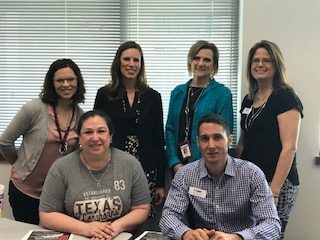Editor’s note: This post was originally published on Janelle’s blog.
I recently saw a post on LinkedIn about how it was obvious that Mark Zuckerburg had been coached prior to his congressional hearing. The post went on to say that it illustrated the importance of coaching at every level. Sharing a conversation about that post with superintendent Mike Pettibone recently, he replied simply, “All champions have coaches.” What an incredibly true statement! We don’t think twice about top athletes having coaches. Why should coaching be relegated to the sports arena?
The Why of Leadership Coaching
I get to coach teachers across the nation on a regular basis. Most recently, I’ve begun coaching educational leaders as well. School systems have limited funding when it comes to professional development. Most often, they invest these dollars in their teachers. The mindset makes sense. These are the people directly impacting the students.
I would argue, however, that the professional learning needs to start with the leaders. This approach is important for many reasons: staying abreast of current policies and best practices, modeling a growth mindset, stretching their own leadership development. If administrators do take some time for professional growth, it’s typically going away to a conference. While I love a good conference, as a former district administrator, I understand the difficulty of leaving the office. On top of that, I would often return on overload and only a few nuggets I had just learned would actually get put into play.
This is where the benefits of leadership coaching come in. First, coaching is one-on-one, so it can be completely individualized to the needs of the leader. Second, it’s job-embedded, occurring in their office, either face-to-face or virtually. Lastly, it’s ongoing to ensure sustainable change and success in attaining the goals that have been set.
The How of Leadership Coaching
I prefer to begin a new coaching cohort in a small group setting. This is a great way to introduce leaders (anywhere from 10-20 people per group is ideal) to foundational pieces of effective leadership practices, define the coaching process, and begin to establish goals and action steps. While the following coaching sessions are all individual, it’s nice to start in the group to solidify feelings camaraderie, building these important professional relationships in the process.
The first coaching session can be used to establish a strategic plan or refine one that it is already in place. From that, the leader sets a goal for him/herself and/or their organization. Writing goals is only as good as the action steps that follow. We always end the sessions with clear “next steps” in place. On average, this session lasts about an hour.
The subsequent sessions are continuations of the ones before. We reflect on practices, make adjustments to the goal if necessary, and set new action steps. Sometimes, the leader pulls in other members of the leadership team. Sometimes, they take me on learning walks throughout their buildings. Sometimes, I co-lead a staff meeting introducing key points or strategies, or leading the team through reflective practice or a team-building activity. The activities vary, the conversations are authentic, and the plan is always customized based on the needs and goals established by the leader.
Ideally, coaching sessions happen monthly. The benefit is that the leaders are taking an hour per month to build themselves, and subsequently, their teams in real time with real objectives. Change is manageable because of how we break it up and sustainable because of the leadership strategies we put into place. Time and again, I have seen immediate and longer-term success from these sessions. Leaders feel heard and supported (some for the first time in their careers), leaving them better able to hear and support those in their charge. In between coaching sessions, leaders always know they can contact me virtually to get feedback and support as needed.
By investing in time with a coach in a job-embedded situation, the leaders refine their practice and become stronger champions for their organizations. This isn’t a one-shot learning opportunity. Lewis Howes said it well, “I have learned that champions aren’t just born; champions can be made when they embrace and commit to life-changing positive habits.”

